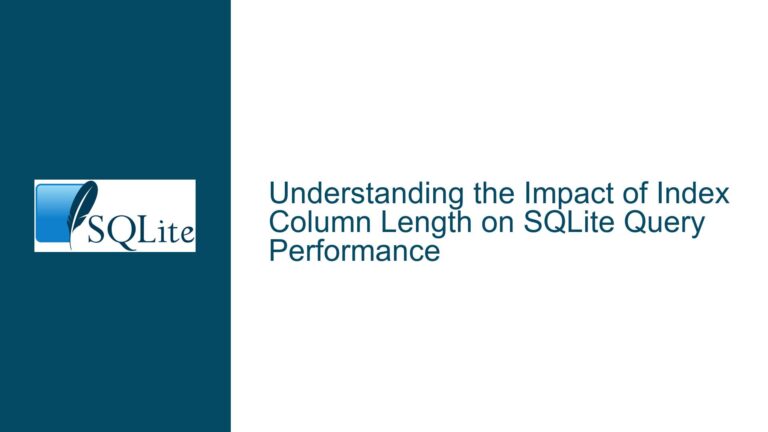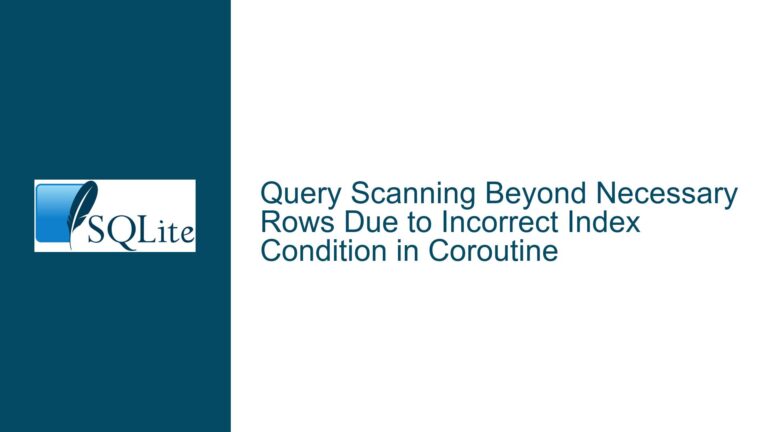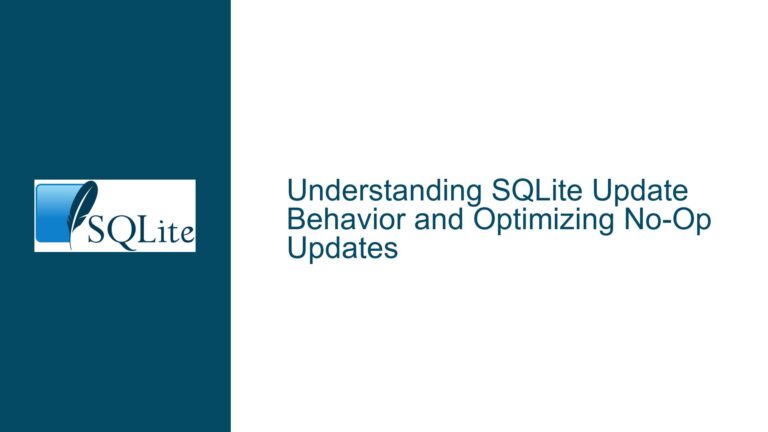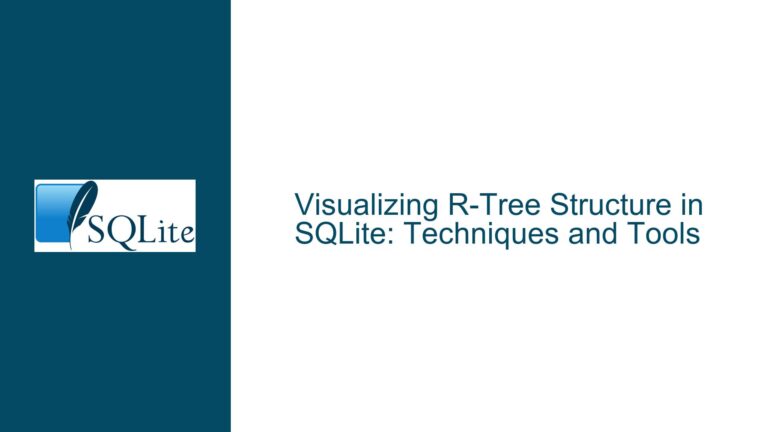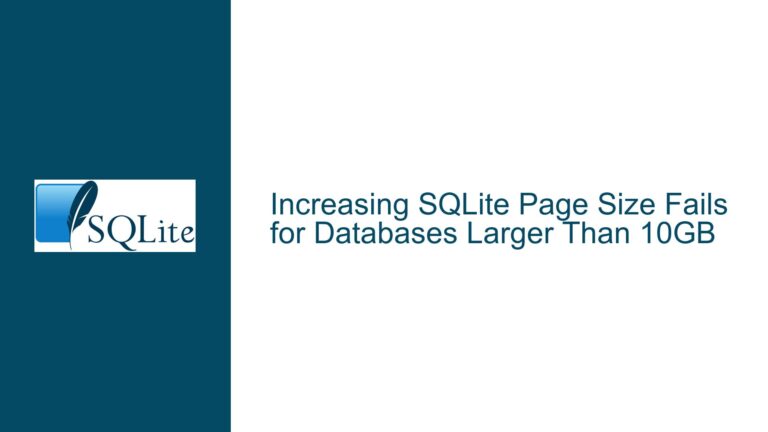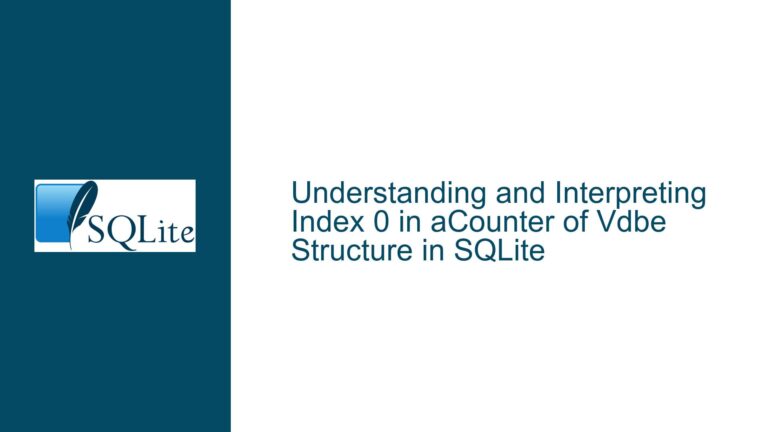SQLite Disk Flush Behavior in Synchronous NORMAL Mode
Operational Mechanics of SQLite’s Synchronous NORMAL Mode
SQLite’s PRAGMA synchronous = NORMAL configuration balances performance and data durability by controlling how the database engine interacts with storage hardware. Unlike FULL mode (which enforces strict synchronization via fsync or equivalent system calls after every write) or OFF mode (which delegates all synchronization to the operating system), NORMAL mode adopts an intermediate strategy. It ensures that written data reaches the operating system’s buffer cache but delays forcing it to physical storage until specific events occur. This design minimizes the performance penalty of frequent disk I/O operations while maintaining reasonable safeguards against data loss.
Under NORMAL mode, SQLite does not employ background threads to flush data to disk. All I/O operations—including writes and synchronization—are executed synchronously on the calling thread. The absence of a dedicated flushing thread means that the timing and frequency of disk synchronization depend on SQLite’s transactional logic, the operating system’s buffer management policies, and hardware characteristics. Misconceptions about automatic periodic flushing often arise from conflating SQLite’s write-ahead logging (WAL) mechanics with general I/O buffering behaviors.
Key operational points include:
- Transactional Boundaries: Data modifications within a transaction are batched in memory until the transaction is committed. At commit time, SQLite writes changes to the WAL file or rollback journal (depending on the journaling mode) but defers synchronization unless explicitly required by the synchronous mode.
- Checkpoint Operations: In WAL mode, checkpointing (transferring changes from the WAL to the main database file) triggers synchronization when
synchronous = NORMAL. - File Handle Closure: Closing a database connection forces any pending writes to disk.
Common Misconceptions Leading to Data Flush Uncertainty
Developers encountering unexpected behavior with synchronous = NORMAL often misinterpret SQLite’s guarantees due to gaps in understanding its I/O stack integration. The following factors contribute to confusion:
Operating System Buffer Cache Assumptions:
SQLite relies on the OS to manage the buffer cache. Whensynchronous = NORMAL, writes are handed off to the OS but not immediately persisted to disk. The OS may delay flushing cached data indefinitely unless system-wide memory pressure forces eviction. This creates a window where data appears "written" to the application but remains vulnerable to power loss or system crashes.Journaling Mode Interactions:
The behavior ofsynchronous = NORMALdiffers between rollback journal and WAL modes. In rollback journal mode, SQLite flushes the journal file to disk during transaction commit, but not the main database. In WAL mode, synchronization occurs during checkpointing, not transaction commits. Misconfiguring the journaling mode (e.g., usingDELETEinstead ofWAL) exacerbates durability risks.VFS Layer Abstraction:
SQLite’s Virtual File System (VFS) layer allows custom I/O implementations. Overriding default behaviors (e.g., disablingxSynccalls) can decouple SQLite’s synchronization logic from physical disk operations, leading to unrecoverable corruption if not rigorously tested.Hardware and Filesystem Variability:
Storage devices with volatile write caches (common in consumer-grade SSDs) or network-attached filesystems (NFS, SMB) may ignore synchronization requests, renderingsynchronous = NORMALineffective. Developers often overlook these hardware-level nuances when diagnosing flush-related issues.
Strategies for Ensuring Data Consistency and Performance
To mitigate risks while leveraging synchronous = NORMAL, implement the following practices:
1. Validate Filesystem and Hardware Compliance
- Disable Volatile Write Caches: Use tools like
hdparm(Linux) or manufacturer utilities to ensure storage devices honor flush commands. For example:sudo hdparm -W0 /dev/sdX # Disables drive write caching - Mount Filesystems with Synchronous Options: Mount flags like
sync(ext4) orforcedirectio(ZFS) bypass OS buffering, though this negates performance benefits. Reserve for critical databases. - Test with
PRAGMA integrity_check: Regularly verify database integrity after unclean shutdowns to detect hardware/filesystem noncompliance.
2. Optimize Checkpointing in WAL Mode
- Manual Checkpoint Control:
PRAGMA wal_checkpoint(TRUNCATE); // Aggressively truncate WAL after checkpointSchedule checkpoints during idle periods or after bulk operations to minimize I/O contention.
- Automatic Checkpoint Thresholds:
ConfigurePRAGMA wal_autocheckpointto limit WAL size, but avoid overly small thresholds that fragment writes.
3. Leverage Application-Level Synchronization
- Explicit Flush Calls: Use
sqlite3_db_cacheflush()orPRAGMA schema.synchronous = FULLtemporarily during critical operations:sqlite3_db_cacheflush(db); // Flushes all dirty pages to disk - Transactional Batching: Group small writes into larger transactions to amortize synchronization overhead.
4. Monitor Operating System Buffering
- Inspect Dirty Page Counts: On Linux, use
/proc/meminfoto trackDirtypages pending writeback. High values indicate delayed flushes. - Tune Kernel Parameters: Adjust
vm.dirty_ratioandvm.dirty_expire_centisecsto balance memory usage and flush frequency.
5. Adopt Defensive Programming Practices
- Atomic Backup Procedures: Use
.backupcommand orsqlite3_backup_init()API for crash-consistent backups, avoiding file-copy methods that bypass SQLite’s VFS. - Error Handling for
SQLITE_BUSY: Retry logic with exponential backoff mitigates contention when multiple processes access the database.
6. Profile and Tune Performance
- Benchmark Flush Impact: Compare transaction throughput under
NORMALvs.FULLmodes using tools likesqlite3_analyzer. - Identify Long-Running Transactions: Use
PRAGMA schema.lock_statusto detect transactions blocking checkpointing or causing excessive WAL growth.
By contextualizing SQLite’s flush mechanics within the broader I/O stack and adopting a proactive stance toward filesystem/hardware validation, developers can harness synchronous = NORMAL effectively. This mode remains a pragmatic choice for applications prioritizing speed over absolute durability, provided robustness measures are ingrained at every layer—from SQLite configuration to storage hardware.

